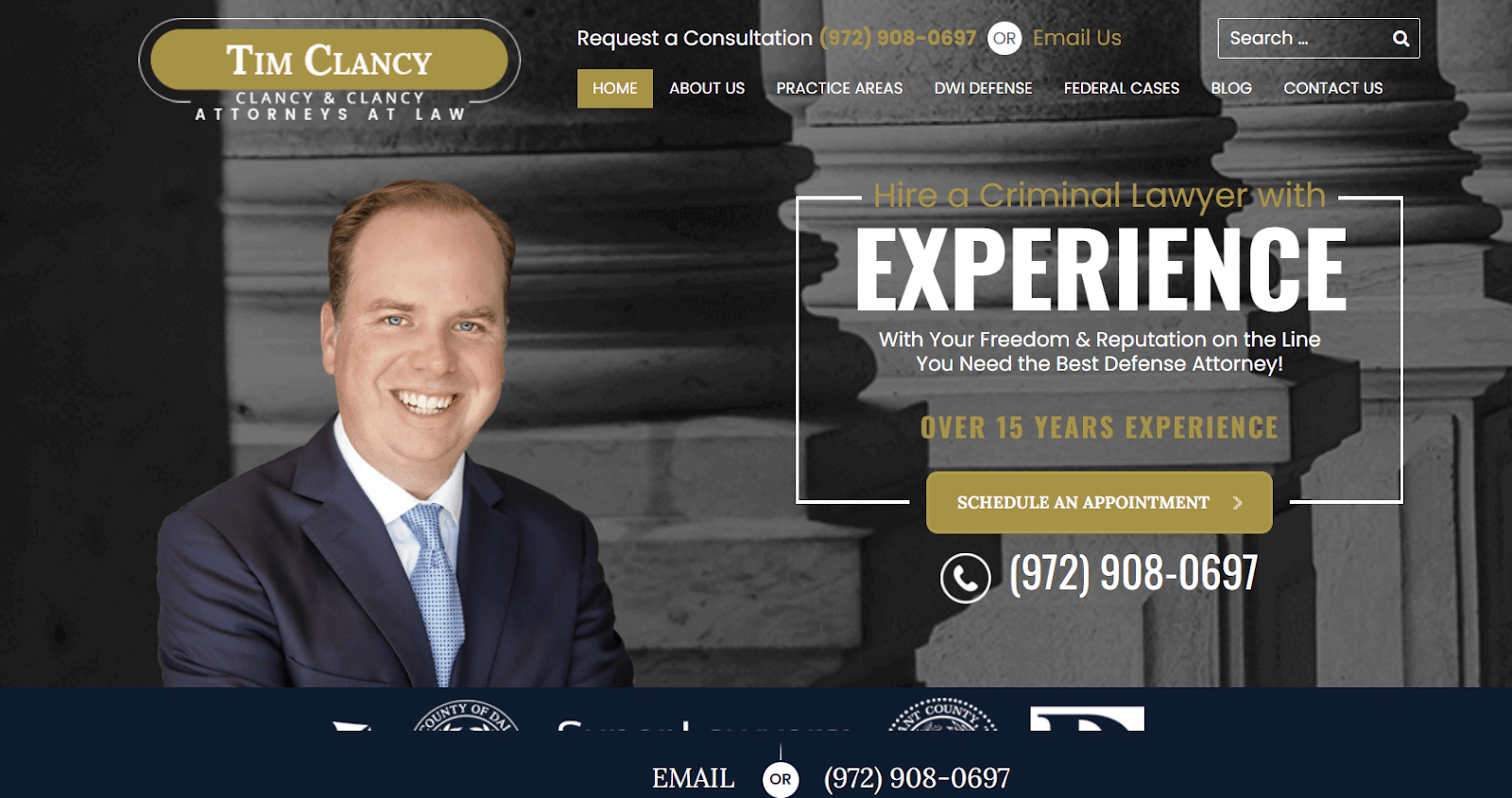Multiple Accidents and Car Insurance
Dreading finding the right car insurance after multiple fender benders? You’re not alone. Multiple accidents can wreak havoc on your insurance rates. However, it is important to stay positive and take steps to mitigate the damage. In this article, we’ll dive into the impact of multiple accidents on car insurance and offer up some tips for getting the best rates possible. Buckle up, and let’s navigate this road together.
Multiple Accidents and Insurance Premiums
Well, multiple accidents will likely cause your insurance premiums to soar. Why is that? Because each mishap is seen as a red flag, indicating to insurers that you’re a risky driver. They fear that you’re more likely to file claims in the future, which means they have to pay out more money. It’s a bit like having a reputation for breaking things – no one wants to be around someone who’s always causing accidents!
The number of accidents you’ve had, the severity of those accidents, and the amount of time between accidents all factor into how much your premiums will increase. If you’ve had multiple accidents in a short period of time, or if you’ve been involved in serious accidents, you can expect your rates to go up significantly. However, if your accidents were minor and spaced out over several years, the impact on your premiums may be less severe.
Ugh, we know it’s not fair! But insurance companies have to protect themselves, right? They need to make sure they have enough money to pay for all the claims that come their way. So, if you’ve been in multiple accidents, they’re going to charge you more to make up for the increased risk.
Now, let’s not lose hope. There are ways to minimize the impact of multiple accidents on your insurance rates. By taking the following steps, you can show insurers that you’re a responsible driver who’s committed to staying safe behind the wheel.
• Maintain a clean driving record. Avoid getting into any further accidents or traffic violations.
• Take a defensive driving course. This can help you learn how to avoid accidents and improve your driving skills.
• Install a telematics device in your car. This device can track your driving habits and provide insurers with data that shows you’re a safe driver.
• Increase your deductible. This is the amount you have to pay out of pocket before your insurance coverage kicks in. Raising your deductible can lower your premiums.
• Shop around for insurance. Compare quotes from multiple insurance companies to find the best rates.
By following these tips, you can minimize the impact of multiple accidents on your car insurance rates. Remember, it’s not the end of the world if you’ve had a few fender benders. Just be proactive and take steps to show insurers that you’re a safe driver.
Car Insurance for Multiple Accidents: Navigating the Road to Higher Premiums
If you’ve been in a car accident, you’re probably all too familiar with the resulting headaches—the physical pain, the property damage, and the hassle of repairs. But what you may not realize is that your car insurance could also take a hit. When an accident report is filed, it’s a red flag for insurance companies, who may view you as a higher risk and bump up your premiums.
How Accidents Affect Car Insurance
The impact of an accident on your car insurance premium depends on several factors, including your driving record, the severity of the accident, and whether you were at fault. In most cases, an at-fault accident will lead to a higher premium than a not-at-fault accident. That’s because insurance companies believe that at-fault drivers are more likely to cause future accidents.
The severity of the accident also plays a role in premium increases. A minor fender bender may only result in a small premium hike, while a major accident could lead to a significant increase or even policy cancellation. In fact, some insurance companies may not even renew your policy if you have multiple accidents within a certain time frame.
Understanding the Multiple Accident Surcharge
Many insurance companies impose a multiple accident surcharge on drivers who have been involved in multiple at-fault accidents. This surcharge is typically a percentage of your premium, and it can range from 10% to 50% or more. The surcharge is designed to discourage drivers from engaging in risky behavior and to offset the increased costs associated with insuring high-risk drivers.
The multiple accident surcharge typically stays on your policy for three to five years, depending on the insurance company. During this time, you’ll pay a higher premium. However, if you maintain a clean driving record during that period, the surcharge will eventually expire, and your premiums may return to normal.
If you’re facing a multiple accident surcharge, there are a few things you can do to reduce its impact on your premiums. First, make sure you’re getting the best possible rate from your insurance company. You might consider shopping around for a new policy or negotiating with your current insurer.
Second, maintain a clean driving record. Avoid getting into any further accidents, and be sure to obey the traffic laws. This will show your insurance company that you’re a responsible driver and that you’re taking steps to reduce your risk of future accidents.
Finally, consider taking a defensive driving course. This can help you to improve your driving skills and reduce your risk of accidents. Some insurance companies may even offer a discount on your premiums if you complete a defensive driving course.
Getting into multiple accidents can have a significant impact on your car insurance. But by understanding how accidents affect your premiums and taking steps to reduce your risk, you can minimize the financial impact and get back on the road to lower premiums.
Car Insurance for Multiple Accidents: Navigating Surcharges and Penalties
Dealing with multiple car accidents can not only be stressful but can also have significant repercussions on your insurance premiums. Insurance companies typically impose surcharges, or additional fees, for each accident on your policy. Understanding these surcharges and their impact on your insurance costs is crucial for making informed decisions about your coverage.
Understanding Surcharges
When you file a claim for an accident, your insurance company will review the circumstances and assign a surcharge to your policy. The amount of the surcharge varies depending on factors such as who was at fault for the accident, the severity of the damage, and your driving history. In general, the more accidents you have, the higher the surcharge will be.
For instance, let’s say you have two at-fault accidents within a three-year period. Your insurance company may impose a surcharge of 20% on your annual premium for the first accident and an additional 15% for the second. This means that your insurance costs could increase by 35% overall.
Penalties for Multiple Accidents
In addition to surcharges, you may also face penalties for multiple accidents. These penalties can vary by state and insurance company but may include:
- Higher deductibles:
The deductible is the amount you pay out of pocket before your insurance coverage kicks in. If you have multiple accidents, your insurance company may increase your deductible to reduce its risk.
- License suspension or revocation
In some cases, multiple accidents can lead to license suspension or revocation, particularly if you were found to be at fault or driving under the influence.
- Cancellation of your insurance policy
If you have a history of multiple accidents, your insurance company may decide to cancel your policy. This can make it difficult to obtain affordable insurance in the future.
Tips for Managing Surcharges
Managing surcharges and penalties for multiple accidents can be challenging, but there are steps you can take to mitigate their impact:
- Maintain a good driving record
The best way to avoid surcharges is to drive safely and avoid accidents. By maintaining a clean driving record, you can demonstrate to your insurance company that you are a responsible driver.
- Work with an insurance broker
An insurance broker can help you compare rates from multiple insurance companies and find the most affordable option for your needs, even if you have a history of multiple accidents.
- Take a defensive driving course
Completing a defensive driving course can help you improve your driving skills and qualify for discounts on your insurance premiums.
Car Insurance for Multiple Accidents: The Consequences and How to Deal with Them
If you’ve had multiple car accidents, getting insurance can be a daunting task. Insurance companies view you as a higher-risk driver, which means they could deny your coverage or charge you sky-high premiums. But don’t despair, there are still options available to you.
Policy Cancellation
After multiple accidents, your insurance company may decide not to renew your policy. This is because they believe you’re too risky to insure. If this happens, you’ll need to find a new insurance company that’s willing to take you on.
Premium Increases
If your insurance company decides to renew your policy, they may do so with a much higher premium. This is because they’re taking on a greater risk by insuring you. The amount of the increase will depend on the severity of your accidents and your driving record.
High-Risk Insurance
If you’re unable to find a standard insurance policy, you may need to consider high-risk insurance. This type of insurance is designed for drivers who have been denied coverage or have been charged extremely high premiums. The premiums for high-risk insurance are typically much higher than for standard insurance, but it can be the only option for some drivers.
SR-22 Insurance
If you’re convicted of certain driving offenses, such as DUI or reckless driving, you may be required to file an SR-22 form with your insurance company. This form certifies that you have liability insurance. Your insurance company will typically charge a higher premium for SR-22 insurance.
What to Do After Multiple Accidents
If you’ve had multiple accidents, there are a few things you can do to improve your chances of getting insurance:
- Take a defensive driving course. This course can help you learn how to avoid accidents in the future.
- Install a dashcam in your car. This can provide video evidence of an accident, which can help you prove your innocence.
- Maintain a good driving record. Avoid getting any more tickets or accidents.
- Shop around for insurance. Compare quotes from different insurance companies to find the best deal.
Getting insurance after multiple accidents can be challenging, but it’s not impossible. By following these tips, you can increase your chances of finding affordable coverage.
Policy Renewal
After multiple accidents, insurance companies may refuse to renew your policy or offer it with higher premiums. This is because they view you as a higher-risk driver. If this happens, you’ll need to find a new insurance company that’s willing to take you on. The cost of your new policy will likely be higher than your previous policy. However, there are a few things you can do to lower your premiums, such as taking a defensive driving course or installing a dashcam in your car.
Premium Increases
If your insurance company does renew your policy, they may do so with a much higher premium. The amount of the increase will depend on the severity of your accidents and your driving record. If you’re not happy with the premium increase, you can shop around for insurance from other companies. However, it’s important to compare quotes carefully before switching insurance companies. Make sure you’re getting the best coverage for the best price.
High-Risk Insurance
If you’re unable to find a standard insurance policy, you may need to consider high-risk insurance. This type of insurance is designed for drivers who have been denied coverage or have been charged extremely high premiums. The premiums for high-risk insurance are typically much higher than for standard insurance, but it can be the only option for some drivers.
SR-22 Insurance
If you’re convicted of certain driving offenses, such as DUI or reckless driving, you may be required to file an SR-22 form with your insurance company. This form certifies that you have liability insurance. Your insurance company will typically charge a higher premium for SR-22 insurance.
Conclusion
Getting insurance after multiple accidents can be a challenge, but it’s not impossible. By following these tips, you can increase your chances of finding affordable coverage. Remember, it’s important to shop around for insurance from different companies and compare quotes carefully. However, the most important thing is to maintain a good driving record. The fewer accidents you have, the lower your insurance premiums will be.
Car Insurance for Multiple Accidents: Navigating the Road Ahead
If you’re dealing with the aftermath of multiple car accidents, you’re not alone. Many drivers find themselves in similar situations, and the consequences can be far-reaching. Armed with the right information, you can take steps to minimize the impact on your life and get back on the road safely.
Consequences of Multiple Accidents
The repercussions of multiple accidents can be severe. Your driving record may take a hit, leading to a loss of privileges or a steep increase in insurance premiums. You may also experience difficulty finding an insurer willing to cover you, or you may be forced to pay sky-high deductibles. In extreme cases, multiple accidents can result in financial hardship or even a shattered life.
Impact on Insurance Rates
Insurance companies use your driving record to assess your risk as a driver. A history of multiple accidents will raise red flags and likely drive up your rates. The more accidents you have, the more your insurance will cost. This can put a significant dent in your budget, especially if you’re trying to get back on your feet financially.
Finding Affordable Coverage
Finding affordable car insurance after multiple accidents can be a challenge. Many insurers will refuse to cover drivers with a history of accidents, or they will charge exorbitant rates. However, there are still options available. You may need to shop around and get quotes from multiple insurers to find the most competitive rates. Consider contacting an insurance broker who specializes in high-risk drivers to help you find the best policy for your needs.
Reducing Your Risk
The best way to avoid the consequences of multiple accidents is to reduce your risk of being involved in one in the first place. This means practicing safe driving habits, such as obeying speed limits, wearing a seatbelt, and avoiding distractions. Defensive driving courses can also help you develop safer driving habits and improve your reaction time.
Path to Recovery
Dealing with the aftermath of multiple car accidents can be difficult. But remember, you’re not alone. There are resources available to help you get back on your feet, both financially and emotionally. Stay positive, seek professional help if needed, and don’t give up. With determination and perseverance, you can overcome the challenges and move forward with your life.





Leave a Reply